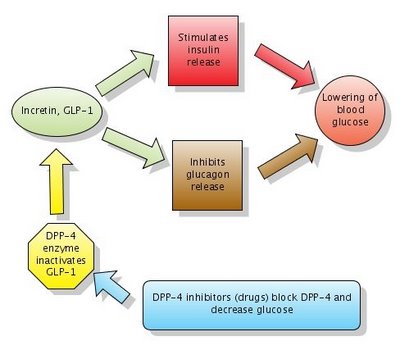 Metformin is the recommended initial drug therapy for patients with type 2 diabetes mellitus (DM). However, the optimal second-line drug when metformin monotherapy fails is unclear.
Metformin is the recommended initial drug therapy for patients with type 2 diabetes mellitus (DM). However, the optimal second-line drug when metformin monotherapy fails is unclear.All noninsulin antidiabetic drugs were associated with similar HbA1c reductions but differed in their associations with weight gain and risk of hypoglycemia.
The different classes of drugs were associated with similar HbA1c reductions (range, 0.64%-0.97%) compared with placebo.
Noninsulin antidiabetic drugs and their effect on body weight:
- thiazolidinediones, sulfonylureas, and glinides were associated with weight gain (range, 1.77-2.08 kg)
- glucagon-like peptide-1 analogs, alpha-glucosidase inhibitors, and dipeptidyl peptidase-4 inhibitors were associated with weight loss or no weight change
Sulfonylureas and glinides were associated with higher rates of hypoglycemia than with placebo.
References:
Effect of Noninsulin Antidiabetic Drugs Added to Metformin Therapy on Glycemic Control, Weight Gain, and Hypoglycemia in Type 2 Diabetes. JAMA. 2010;303(14):1410-1418. doi: 10.1001/jama.2010.405
Insulin treatment for type 2 diabetes: When to start, which to use - The Cleveland Clinic approach
Image source: Metformin. Wikipedia, public domain.







